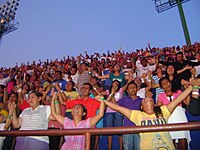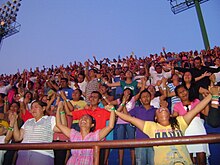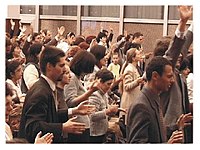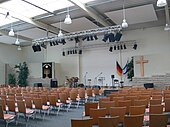헤른후트와 본회퍼 그리고 나
헤른후트와 본회퍼 그리고 나
홍주민 (juminhong@naver.com)
승인 2010.12.18 22:06
헤른후트(Herrnhut), 우리말로 '주님이 보호하시는 곳'을 의미한다. 헤른후트 공동체 운동은 지금으로부터 약 300년 전, 독일의 북동부에 위치한 한 자그마한 마을에서 시작되었다. 이 운동은 니콜라우스 루트비히 폰 친첸도르프(1700-1760)에 의해 시작된 창조적인 디아코니아 공동체 운동이다.
섬김 공동체였던 초대교회를 이루고자 했던 그는 대학을 졸업하고 드레스덴에서 직장 생활을 하던 중, 그의 일생을 변화시킨 모라비아 교도들을 만난다. 이들은 체코 프라하에서 종교개혁 운동을 하다가 1415년에 화형당한 얀 후스의 후예들이었다. 친첸도르프는 이들에게 자신의 사유지를 제공하여 정착하도록 하는데, 이들은 그곳을 '헤른후트'라 칭하고 1727년경 200여 명의 모라비아 이주자들과 함께 공동체 생활을 시작한다.

▲ 헤른후트 공동체
이들에게 아주 독특한 형식의 말씀 묵상집이 전해 내려오는데, 바로 헤른후트 기도서이다. 이 기도서는 'Die Losungen(로중)'이라고 하는데 그 의미는 군사적인 용어로 '암호'라고 한다. 군인이 싸우러 나갈 때 암호는 적군과 대치 상황에서 아주 생명과 같은 것이다. 만약에 암호를 잘못 외우거나 모르면 생명의 위협을 가져올 수 있다. 이 기도서의 첫 주창자인 친첸도르프는 헤른후트 공동체원들이 매일매일의 삶 속에서 짧은 말씀이지만 생명과도 같은 소중한 말씀으로 영적 투쟁에서 승리할 것을 바라면서 로중 운동을 시작하였다.
필자는 2007년과 2009년 여름, 헤른후트 공동체를 방문한 적이 있다. 첫 방문 때 우연히 이 로중을 만드는 이들을 만날 수 있었는데, 그들은 나에게 지난 300여 년 동안 매일을 위한 구약성서 구절을 제비뽑기하여 뽑아내는 제비 함을 보여 주었다. 그 안에는 1,800개의 번호가 적혀 있는 제비가 있었고 한쪽에는 번호와 성서 구절이 적혀 있는 문건이 있었다. 아주 인상적이었다. 300여 년 전부터 컴퓨터의 도움이 없이 이러한 작업이 진행되었다는 사실과 그 과정 속에서 성서 구절이 반복되지 않는다는 것은 아주 경이로움을 자아냈다. 그들은 말하기를, 1년을 위해 뽑힌 제비는 다음 3년 동안 옆으로 놓이고 이 기간에는 이미 뽑힌 구절은 제외된다고 한다. 그런데 그들은 이 뽑힌 말씀을 주님께서 주신 말씀으로 받아들인다.
필자가 헤른후트 기도서를 접한 것은 십여 년 전 독일에 공부하러 갔던 유학 초년기였다. 독일에서는 서점에 다른 큐티 자료는 별로 없지만 이 기도서는 어디서나 찾아볼 수 있을 정도로 보편화되어 있다. 처음으로 필자가 이 로중을 접한 것은 독일어를 배우는 기간 중 독일 기독학생회에 참여하여 모임에 정기적으로 나가게 되면서였다. 매주 월요일 저녁 시간에 마인츠 구시가지에 있는 모임 장소에서 모였는데, 그 모임에 참여하는 이들은 독일 학생들도 있었지만 외국 학생들이 많았다. 전 세계에서 몰려온 친구들과 어울려 독일어로 인사를 나누고 교제하는 것은 이국땅에서의 외로움과 불안감을 떨치게 하는 데에 중요한 역할을 했다. 그런데 그 가운데 지금도 뚜렷하게 기억으로 남아 있는 것은 매번 모여서 말씀 묵상과 찬양을 하면서 접한 헤른후트 로중과의 만남이었다. 아주 짧은 말씀이지만 그 말씀을 읽고 돌아가면서 떠듬떠듬 자신의 가슴에 부딪힌 것을 독일어로 나누는 시간은 그 어떠한 설교보다도 더 강력한 메시지로 나를 휘감았다. 그때부터 가까이하게 된 로중은 이국땅에서 힘들었던 순간에 나를 무너지게 하는 힘들에 대항하는 '아주 작은 영적 무기'였다.

▲ 특히 행동하는 신학자로 20세기 후반에 개신교의 신학과 실천에 큰 영향을 끼친 디트리히 본회퍼는 헤른후트 기도서의 애독자였다.
이 로중은 슐라이에르마허, 본회퍼, 코트비츠, 비헤른 등 수많은 개신교인들에게 교단과 교파를 초월하여 지대한 영향을 끼쳐 왔다. 특히 행동하는 신학자로 20세기 후반에 개신교의 신학과 실천에 큰 영향을 끼친 디트리히 본회퍼는 헤른후트 기도서의 애독자였다. 본회퍼는 2차 세계대전 중 히틀러 암살 계획에 가담했다가 발각돼 2년 동안 감옥 생활을 하고 전쟁이 끝나기 직전 교수형에 숨진 인물이다. 그는 1933년 히틀러가 국가 사회주의를 주창하며 유대인 600만여 명을 학살하고 수천만 명의 희생자를 낸 2차 세계대전을 일으킨 전쟁광인 히틀러에게 항거한 것이다. 그는 히틀러를 '적그리스도'로 보고 이에 저항하는 '고백교회' 운동을 하면서 신앙을 지켜 나갔다.
1939년 7월 미국 유니언 신학교 초빙교수로 있던 본회퍼는 당시 그의 심경을 그의 책 '공동의 삶(Gemeinsames Leben)'에서 다음과 같이 기록한다. "헤른후트 기도서는 단순한 성경 말씀 구절에 그치지 않는다. 매일 주어지는 말씀은 우리에게 앞으로 나갈 길을 결정할 수 있게 한다." 본회퍼는 1939년 여름, 미국에서 기록한 일기문에 아주 분명한 필치로 자신이 미국에 계속 머물 것인지 아니면 독일로 돌아가야 하는지에 대해 로중 말씀을 읽으며 고민하는 흔적이 나온다. 그러한 고심을 하는 가운데 로중의 한 말씀이 그를 강타한다. "주님은 은을 정련하고 깨끗하게 하신다." 말라기서의 이 한 말씀을 읽고 덧붙여 옆에 기록한다. "나는 나를 더 이상 잘 알 수 없다. 하지만 주님은 나를 잘 알고 있다. 결국 모든 행동과 실천은 분명하게 될 것이다." 이 말씀과의 부딪침 이후, 본회퍼는 지체하지 않고 독일로 돌아온다. 그리고 저항 운동에 가담한 본회퍼는 1943년 4월 5일 체포되고, 1944년 전쟁이 끝나기 바로 직전에 교수형으로 처형된다.
본회퍼에게 헤른후트 기도서가 결정적인 역할을 한 것처럼 필자도 그동안 이 작은 기도서에 많은 빚을 지고 있다. 이 기도서의 매일의 말씀은 하루 동안 얼마 안 되는 말씀이지만 하루의 영의 양식으로 결코 부족하지 않다. 지난 300여 년 전부터 개신교 전통에서 가장 널리 활용되는 이 기도서가 51개 국어로 번역되어 지구상의 많은 이들이 동일한 말씀으로 힘을 얻고 있다. 필자는 헤른후트 기도서 2009년도 판부터 <말씀 그리고 하루>(한국디아코니아연구소)라는 제목으로 번역해 한국에 소개하고 있다. 필자는 이 작은 묵상 집을 통해 한국의 많은 그리스도인들이 좀 더 깊이 있는 말씀에 닻을 내리고 살아가기를 소망해 본다. 더 나아가 한국의 그리스도인들이 '행동하는 말씀'인 디아코니아를 조용히, 섬기면서, 사랑하면서 실천해 나가기를 희망해 본다.
"주님은 올바른 길을 보여 주시고자 당신 앞에 계십니다.
주님은 악한 사람들의 흉계로부터 지켜 주시려고 당신 등 뒤에 계십니다.
주님은 아래로 추락할 때에 궁지에서 벗어나게 하시려고 당신 밑에서 잡아 주십니다.
주님은 축복해 주시기 위해 당신 위에 계십니다(초대교회의 축복문)."

▲ 헤른후트 기도서
이 기도문은 2010년 헤른후트 기도서에 나오는 초대교회의 축복문이다. 어느덧 한 해가 기울고 있다. 이 한 해도 초대교회 그리스도인들의 기도문처럼 주님의 은총 가운데서 늘 강건한 삶을 살게 하신 주님께 감사드리며, 새로운 한 해에도 변함없는 주님의 은총이 늘 함께하기를 소망해 본다.
홍주민 / 한신대학교 외래교수
▲ 헤른후트 공동체
이들에게 아주 독특한 형식의 말씀 묵상집이 전해 내려오는데, 바로 헤른후트 기도서이다. 이 기도서는 'Die Losungen(로중)'이라고 하는데 그 의미는 군사적인 용어로 '암호'라고 한다. 군인이 싸우러 나갈 때 암호는 적군과 대치 상황에서 아주 생명과 같은 것이다. 만약에 암호를 잘못 외우거나 모르면 생명의 위협을 가져올 수 있다. 이 기도서의 첫 주창자인 친첸도르프는 헤른후트 공동체원들이 매일매일의 삶 속에서 짧은 말씀이지만 생명과도 같은 소중한 말씀으로 영적 투쟁에서 승리할 것을 바라면서 로중 운동을 시작하였다.
필자는 2007년과 2009년 여름, 헤른후트 공동체를 방문한 적이 있다. 첫 방문 때 우연히 이 로중을 만드는 이들을 만날 수 있었는데, 그들은 나에게 지난 300여 년 동안 매일을 위한 구약성서 구절을 제비뽑기하여 뽑아내는 제비 함을 보여 주었다. 그 안에는 1,800개의 번호가 적혀 있는 제비가 있었고 한쪽에는 번호와 성서 구절이 적혀 있는 문건이 있었다. 아주 인상적이었다. 300여 년 전부터 컴퓨터의 도움이 없이 이러한 작업이 진행되었다는 사실과 그 과정 속에서 성서 구절이 반복되지 않는다는 것은 아주 경이로움을 자아냈다. 그들은 말하기를, 1년을 위해 뽑힌 제비는 다음 3년 동안 옆으로 놓이고 이 기간에는 이미 뽑힌 구절은 제외된다고 한다. 그런데 그들은 이 뽑힌 말씀을 주님께서 주신 말씀으로 받아들인다.
필자가 헤른후트 기도서를 접한 것은 십여 년 전 독일에 공부하러 갔던 유학 초년기였다. 독일에서는 서점에 다른 큐티 자료는 별로 없지만 이 기도서는 어디서나 찾아볼 수 있을 정도로 보편화되어 있다. 처음으로 필자가 이 로중을 접한 것은 독일어를 배우는 기간 중 독일 기독학생회에 참여하여 모임에 정기적으로 나가게 되면서였다. 매주 월요일 저녁 시간에 마인츠 구시가지에 있는 모임 장소에서 모였는데, 그 모임에 참여하는 이들은 독일 학생들도 있었지만 외국 학생들이 많았다. 전 세계에서 몰려온 친구들과 어울려 독일어로 인사를 나누고 교제하는 것은 이국땅에서의 외로움과 불안감을 떨치게 하는 데에 중요한 역할을 했다. 그런데 그 가운데 지금도 뚜렷하게 기억으로 남아 있는 것은 매번 모여서 말씀 묵상과 찬양을 하면서 접한 헤른후트 로중과의 만남이었다. 아주 짧은 말씀이지만 그 말씀을 읽고 돌아가면서 떠듬떠듬 자신의 가슴에 부딪힌 것을 독일어로 나누는 시간은 그 어떠한 설교보다도 더 강력한 메시지로 나를 휘감았다. 그때부터 가까이하게 된 로중은 이국땅에서 힘들었던 순간에 나를 무너지게 하는 힘들에 대항하는 '아주 작은 영적 무기'였다.
▲ 특히 행동하는 신학자로 20세기 후반에 개신교의 신학과 실천에 큰 영향을 끼친 디트리히 본회퍼는 헤른후트 기도서의 애독자였다.
이 로중은 슐라이에르마허, 본회퍼, 코트비츠, 비헤른 등 수많은 개신교인들에게 교단과 교파를 초월하여 지대한 영향을 끼쳐 왔다. 특히 행동하는 신학자로 20세기 후반에 개신교의 신학과 실천에 큰 영향을 끼친 디트리히 본회퍼는 헤른후트 기도서의 애독자였다. 본회퍼는 2차 세계대전 중 히틀러 암살 계획에 가담했다가 발각돼 2년 동안 감옥 생활을 하고 전쟁이 끝나기 직전 교수형에 숨진 인물이다. 그는 1933년 히틀러가 국가 사회주의를 주창하며 유대인 600만여 명을 학살하고 수천만 명의 희생자를 낸 2차 세계대전을 일으킨 전쟁광인 히틀러에게 항거한 것이다. 그는 히틀러를 '적그리스도'로 보고 이에 저항하는 '고백교회' 운동을 하면서 신앙을 지켜 나갔다.
1939년 7월 미국 유니언 신학교 초빙교수로 있던 본회퍼는 당시 그의 심경을 그의 책 '공동의 삶(Gemeinsames Leben)'에서 다음과 같이 기록한다. "헤른후트 기도서는 단순한 성경 말씀 구절에 그치지 않는다. 매일 주어지는 말씀은 우리에게 앞으로 나갈 길을 결정할 수 있게 한다." 본회퍼는 1939년 여름, 미국에서 기록한 일기문에 아주 분명한 필치로 자신이 미국에 계속 머물 것인지 아니면 독일로 돌아가야 하는지에 대해 로중 말씀을 읽으며 고민하는 흔적이 나온다. 그러한 고심을 하는 가운데 로중의 한 말씀이 그를 강타한다. "주님은 은을 정련하고 깨끗하게 하신다." 말라기서의 이 한 말씀을 읽고 덧붙여 옆에 기록한다. "나는 나를 더 이상 잘 알 수 없다. 하지만 주님은 나를 잘 알고 있다. 결국 모든 행동과 실천은 분명하게 될 것이다." 이 말씀과의 부딪침 이후, 본회퍼는 지체하지 않고 독일로 돌아온다. 그리고 저항 운동에 가담한 본회퍼는 1943년 4월 5일 체포되고, 1944년 전쟁이 끝나기 바로 직전에 교수형으로 처형된다.
본회퍼에게 헤른후트 기도서가 결정적인 역할을 한 것처럼 필자도 그동안 이 작은 기도서에 많은 빚을 지고 있다. 이 기도서의 매일의 말씀은 하루 동안 얼마 안 되는 말씀이지만 하루의 영의 양식으로 결코 부족하지 않다. 지난 300여 년 전부터 개신교 전통에서 가장 널리 활용되는 이 기도서가 51개 국어로 번역되어 지구상의 많은 이들이 동일한 말씀으로 힘을 얻고 있다. 필자는 헤른후트 기도서 2009년도 판부터 <말씀 그리고 하루>(한국디아코니아연구소)라는 제목으로 번역해 한국에 소개하고 있다. 필자는 이 작은 묵상 집을 통해 한국의 많은 그리스도인들이 좀 더 깊이 있는 말씀에 닻을 내리고 살아가기를 소망해 본다. 더 나아가 한국의 그리스도인들이 '행동하는 말씀'인 디아코니아를 조용히, 섬기면서, 사랑하면서 실천해 나가기를 희망해 본다.
"주님은 올바른 길을 보여 주시고자 당신 앞에 계십니다.
주님은 악한 사람들의 흉계로부터 지켜 주시려고 당신 등 뒤에 계십니다.
주님은 아래로 추락할 때에 궁지에서 벗어나게 하시려고 당신 밑에서 잡아 주십니다.
주님은 축복해 주시기 위해 당신 위에 계십니다(초대교회의 축복문)."
▲ 헤른후트 기도서
이 기도문은 2010년 헤른후트 기도서에 나오는 초대교회의 축복문이다. 어느덧 한 해가 기울고 있다. 이 한 해도 초대교회 그리스도인들의 기도문처럼 주님의 은총 가운데서 늘 강건한 삶을 살게 하신 주님께 감사드리며, 새로운 한 해에도 변함없는 주님의 은총이 늘 함께하기를 소망해 본다.
홍주민 / 한신대학교 외래교수


















